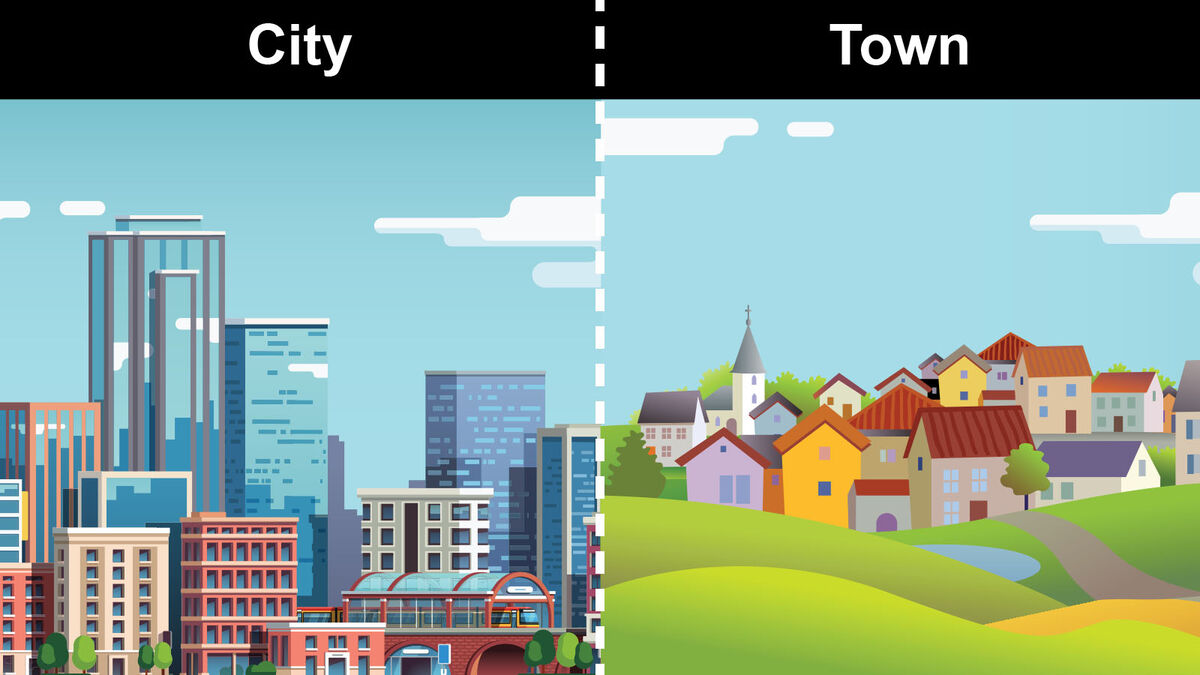
Understanding what makes a village, a city, or a town is more complex than simply stating population sizes. What makes a town or a city is different around the world, so there isn’t a universal definition. Explore definitions and the differences between a city and a town to settle the town vs. city debate.
What Is a City?
The simple definition of city is, “a town of significant size or an urban area with self-government.” The word “city” comes from the French word cite, meaning “town, city.” The French term was taken from the Latin word civitatum, meaning “citizenship.”
Encyclopedia Britannica defines a city as a “relatively permanent and highly organized centre of population, of greater size or importance than a town or village.”
Characteristics of a City
While the size and look of cities varies around the world, there are a few things cities typically have in common.
- They are more urban.
- There is more nonagricultural activity than agricultural activity.
- Elected officials often make policy decisions on behalf of their electors.
Examples of Cities
The first cities in the world are believed to have evolved out of rural villages around 3500 B.C.
Examples of modern cities include the biggest cities in the world such as:
- Cairo
- Delhi
- New York City
- Rio de Janeiro
- Tokyo
What Is a Town?
The simple definition of town is, “a residential area that is smaller than a city and larger than a village.” The word “town” comes from the Old English word tun, meaning “enclosure, garden, field, yard; farm, manor; homestead, dwelling house, or mansion.” The Old English term comes from the Celtic word dunon, which meant “hill or hill-fort.”
Towns existed before modern states and came about between the 15th and 17th centuries. Towns are said to be “mostly but not exclusively semirural communities,” and popular in the U.S. in the New England states, New York, Pennsylvania, and the north-central states.
Characteristics of a Town
Towns are not as easy to spot as cities because they are often intertwined with villages.
- They are more rural.
- Town meetings, or meetings of the taxpayers, make policy decisions.
- Towns often grow around specialized economic activities, like mining.
Examples of Towns
Examples of towns are best found in your local area. These town examples all have official websites you can check out to learn more about towns.
- The town of Chautauqua is located in Western New York, U.S.A.
- The town of Creston is located in British Columbia, Canada.
- The town of Parga is a maritime town in Greece.
Differences Between Cities and Towns
It is difficult to list differences between towns and cities because every state and country uses different definitions for the terms. If you generalize what’s common throughout the world, you can identify a few key differences.
The Population of a City Is Generally Bigger
For government purposes, the U.S. Census Bureau defines a place as “either legally incorporated under the laws of its respective State, or a statistical equivalent that the Census Bureau treats as a census designated place (CDP)”.
In general, any place with more than 2,500 residents can be considered a city, and anything with fewer residents can be considered a town. For more details on the types of places where people live, explore the differences between rural, urban and suburban areas.
City Status Must Be Granted in Some Countries
In the U.K., for example, a city can only officially be called a city if the British government grants it city status.
In 2018, the House of Commons Library created a place classification system. They suggest six types of settlements with the following guidelines:
- core city: has 12 major population and economic centers
- other city: population of more than 175,000
- large town: population between 60,000 and 174,999
- medium town: population between 25,000 and 59,999
- small town: population between 7,500 and 24,999
- village or small community: population of less than 7,500
Cities Are Governed by Representatives
In towns, the taxpayers make many of the important decisions for the town by attending town meetings or participating in public voting. In cities, officials are elected by the people, then those officials make the important decisions.
City vs. Town vs. Village
While village and town are often used interchangeably, they are slightly different. A village is defined as, “a residential area in the country that is smaller than a town.”
Where Do You Live?
If you think about the settlement you live in, you might be able to better see the differences between towns and cities. You can continue learning the subtle nuances of geography by learning the differences between a pond and a lake.